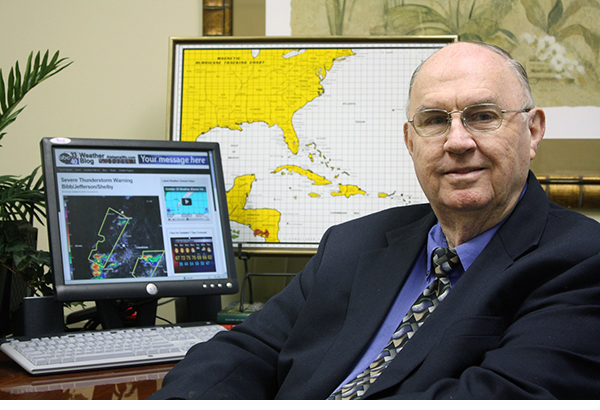There’s No Sunshine… In Baseball? (Photo Credit: Sharon Sullivan)
Ah, baseball season. There’s nothing like the smell of fresh cut grass, a hot dog in your hand, the crack of a bat hitting the baseball. But, did you know that weather has more of an impact on how well the game is played (besides having severe weather delays)? Temperature, barometric pressure, altitude, humidity, wind, and cloud coverage can all affect how far a baseball travels.
At a mile above sea level, Coors Field in Denver, Colorado has an advantage over other major league stadiums. At higher elevations, air has a lower density. This means that there is less air rubbing against the baseball to produce a frictional force, and thus, the baseball can travel farther. Air pressure can also be affected by weather patterns (i.e. high pressure or low pressure systems affecting the area).
As air warms, it expands and the molecules are spread further apart. This warming and expansion helps to lower the density of the air. Temperature ranges can also affect how a player grips a baseball, depending on how sweaty their hands are or if their fingers and cold and numb. Warmer air can also hold more water vapor. But at the same temperature, air with a higher relative humidity will be less dense. This is because as the temperature increases, water vapor displaces the heavier gases in the troposphere and the density per unit volume decreases. Humid air can also have another indirect effect on the ball by storing water within the yarn of the baseball and letting it become heavier.
Wind can either amplify or reduce the amount of friction on the ball depending on the direction of the wind relative to the baseball. Wind coming towards the baseball will act as a frictional force and slow the baseball down. Wind flowing with the baseball will help it travel longer distances. In addition, both cloudy skies and sunshine can affect depth perception from the outfield.
In conclusion, the factors for optimal baseball weather are high elevation, wind blowing towards the outfield, and a warm, humid climate like Miami. However, some precautions need to be taken in these conditions in order to prevent heat exhaustion and other heat-related illnesses. In a changing climate, regions that are wet may get wetter and other areas may get drier. As you warm the Earth, you are able to increase the amount of water vapor that the atmosphere can hold. Temperatures will increase across the board, but the most noticeable temperature differences may be seen in higher latitudes (meaning that even Seattle could expect more home runs in the future).
To learn more about weather and its impact on society, please click here!
©2019 Meteorologist Sharon Sullivan
AlabamaWX is pleased to partner with the Global Weather and Climate Center team for outstanding posts about our atmosphere. Visit them at https://www.globalweatherclimatecenter.com for more great information!
Category: Partner News Stories
















